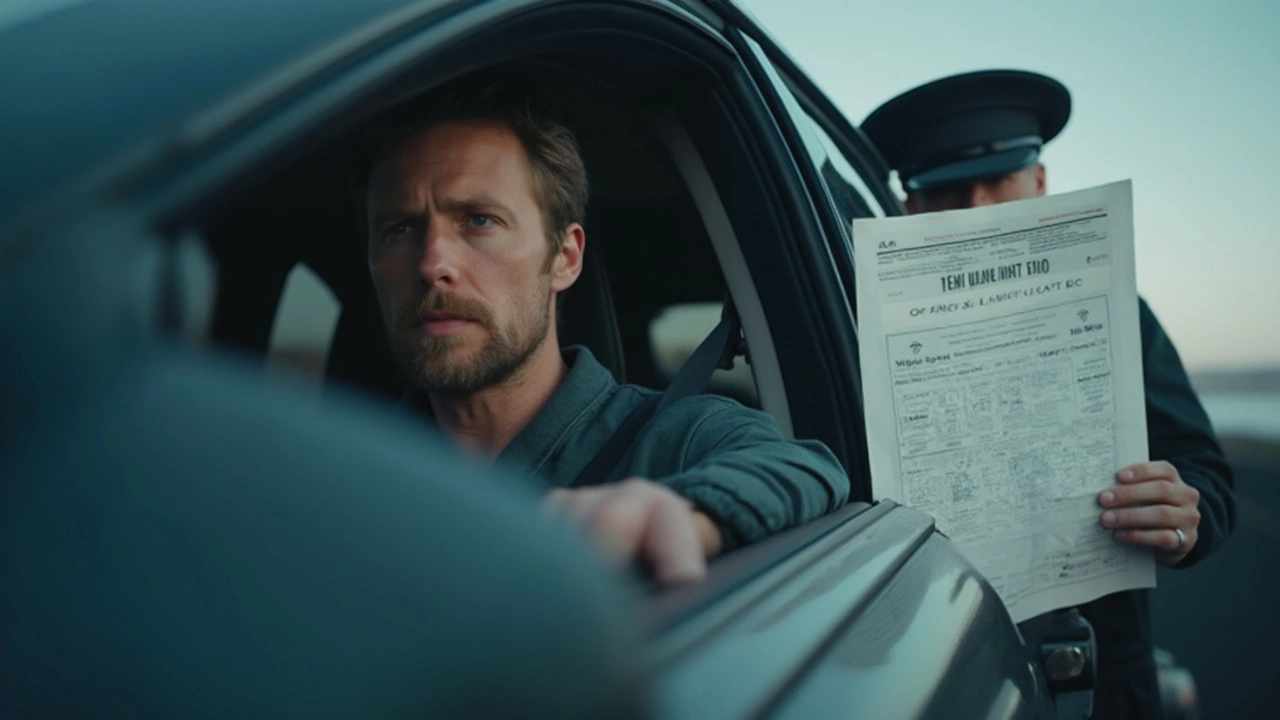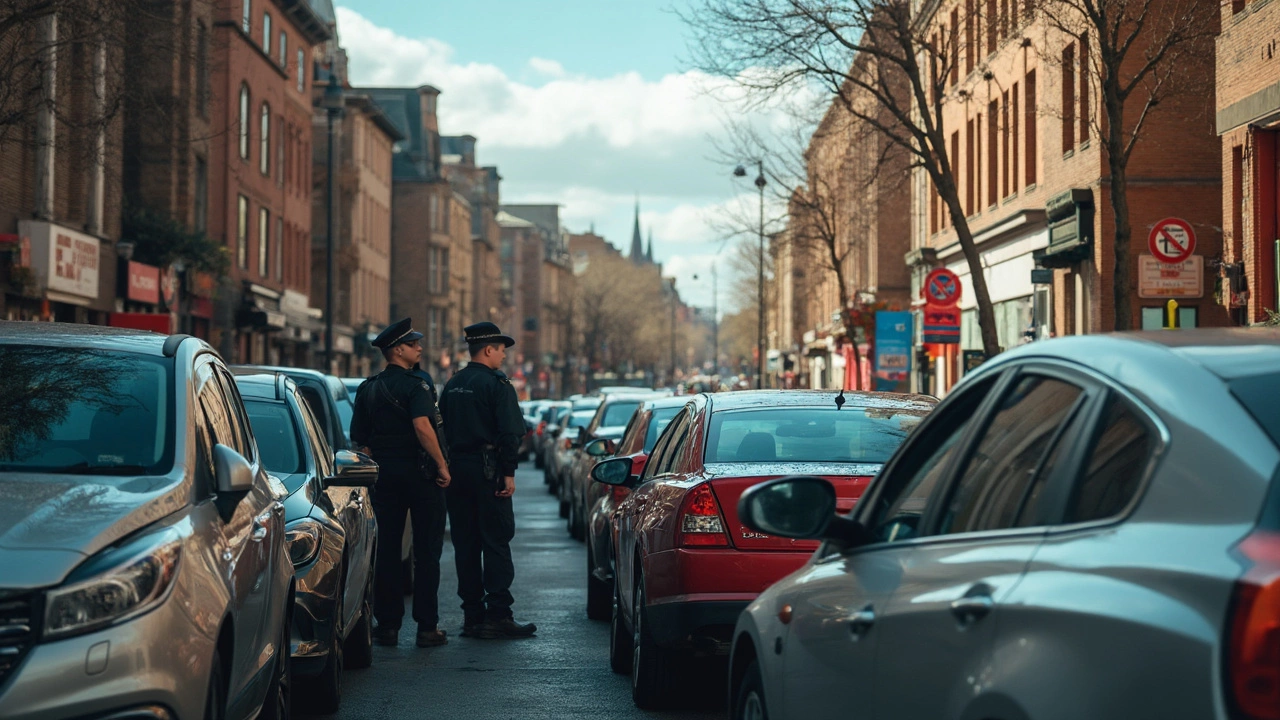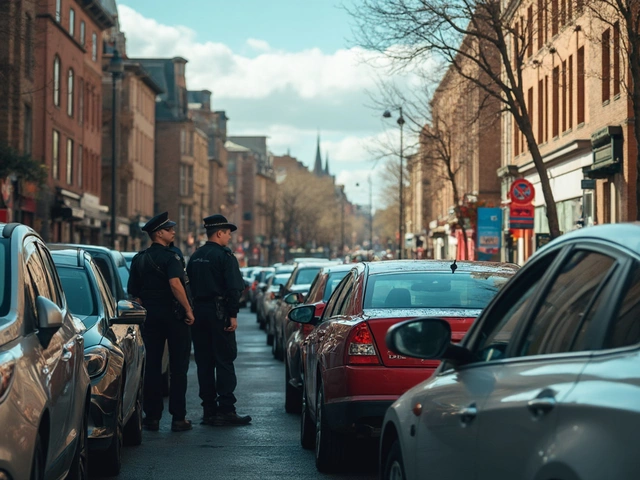You’d be surprised how many folks in Colorado get caught off guard with their window tint. Maybe the shop said it looked cool, maybe your buddy swore everyone does it—but Colorado’s window tint laws are way stricter than most people think. If you’re driving around with 20% tint hoping for the best, here’s the thing: the law isn’t on your side for most windows.
Here’s what really matters: when Colorado talks about window tint percentages, it means the amount of light that gets through the glass and the tint combined—this is called VLT, or Visible Light Transmission. The lower the number, the darker the tint. 20% means only one-fifth of light gets through. That’s pretty dark, and the law cares a lot about it.
If you’re thinking of getting 20% tint, or already have it, you need to know which windows are allowed what. The law isn’t the same for every window, and getting it wrong can cost you—sometimes with a ticket, or worse, a mandatory fix-it order. A lot of people believe the rules are just about looks, but most of the time, it’s actually about visibility for safety and cops being able to see inside your car. So before you throw money at that new tint job, you should really understand how the rules stack up in Colorado.
- Colorado’s Window Tint Rules Explained
- Is 20% Tint Allowed? The Real Story
- What Happens If You Break the Law?
- Tips for Staying Legal and Cool
Colorado’s Window Tint Rules Explained
Understanding Colorado window tint laws isn’t complicated, but the details matter. The state has set legal limits on how dark your tint can be, and it changes depending on which windows we’re talking about.
Front side windows, like the ones next to the driver and passenger, have the toughest rules. By law, they must let at least 27% of light through. This means if you get anything darker, like a 20 percent tint, you’re already flirting with trouble. The rear side windows and the back window (also called the rear windshield) can be as dark as you want if your vehicle has outside mirrors on both sides. Without those mirrors, the rear window needs the same 27% VLT as the front.
For a clearer breakdown, here’s what the law says for regular cars:
- Windshield: Only the top four inches can be tinted, and only to 70% VLT (which is super light).
- Front side windows: At least 27% VLT. No darker. A 20 percent tint is not allowed here.
- Rear side windows: Any darkness if you have both outside mirrors. Otherwise, must also be 27% VLT.
- Rear window: Same as rear side windows—any darkness if you have proper mirrors, 27% minimum if you don’t.
Colorado also bans anything reflective, so if your tint looks shiny or mirror-like, that’s another reason to get pulled over. Vehicles like SUVs and vans get the same rules as sedans, so there’s no sneaking by on a technicality.
Let’s make it visual:
| Window | Legal VLT Limit | Mirrors Required? |
|---|---|---|
| Windshield (top 4 inches) | 70% VLT | No |
| Front side windows | 27% VLT | No |
| Rear side windows | Any darkness | Yes (both sides) if under 27% VLT |
| Rear window | Any darkness | Yes (both sides) if under 27% VLT |
Some folks try to get creative, but Colorado cops have tint meters, and it only takes a minute to get busted at a traffic stop. Always check the percentage—eyeballing isn’t reliable. If you’re buying a used car, never assume the tint is legal just because it’s already there.
Is 20% Tint Allowed? The Real Story
Let’s clear it up right now—if you want 20 percent tint on your ride in Colorado, most windows are off-limits. Here’s how the law breaks down:
- Front side windows: The law says you need at least 27% VLT or higher. That means 20% tint is definitely illegal here. If your sticker on the shop’s tint says 20%, you’re risking a ticket.
- Rear side windows and rear windshield: Here, you get some flexibility. Colorado actually lets you go as dark as you want for the back and rear windows—yep, even 5%. So, 20% tint is totally legal on those windows.
- Windshield: This is strict: only the top 4 inches of your windshield can be tinted, and even then, it can’t be too dark. No 20% legal here at all.
If you’re buying a used car or getting your tint done out-of-state, double check—some places don’t bother about Colorado specs.
Here’s what Colorado’s Department of Revenue actually says:
"No person shall operate a motor vehicle registered in Colorado on which any window is tinted such that visible light transmittance is less than twenty-seven percent on the windshield or front side windows."
It’s not just about numbers on paper either. Cops have light meters. If you get pulled over, it’s not your opinion—it’s math.
| Window | Legal Tint in Colorado (VLT) | Is 20% Tint Legal? |
|---|---|---|
| Front Side | 27% or higher | No |
| Rear Side | Any | Yes |
| Rear Windshield | Any | Yes |
| Windshield | Top 4 inches only | No |
If you’re thinking about how this stacks up to other states, Colorado’s front window rules are stricter than places like Texas or Nevada, but much looser on the rear. So, stick to 27% or lighter for the front, and you won’t sweat it. Go as dark as you want in the back if you like that look or need sun protection for kids or pets.

What Happens If You Break the Law?
So what’s the real deal if you get busted with window tint that’s too dark for Colorado law? First off, the police do pay attention, and getting pulled over for illegal window tinting isn’t as rare as you might think. Cops have small handheld meters that check your tint’s VLT (Visible Light Transmission) on the spot. When your 20 percent tint doesn’t meet the rules, you’re looking at a penalty.
Usually, it starts with a fix-it ticket. That means you’ll have to get the tint taken off, then show proof to the authorities that you fixed your car to comply with the law. Let’s be honest, paying twice—once to put the tint on and again to strip it—feels like burning money. Depending on the cop and your attitude, a ticket can also come with fines. These fines can range from about $50 up into the hundreds, depending on whether it’s a first offense or you’ve been warned before.
Here’s how it typically shakes out if you break the window tint laws in Colorado:
- First offense: A fix-it ticket and a small fine, usually around $50 to $100.
- Repeat offenses: Higher fines, more headaches, and persistent records on your driving record.
- If you ignore the fix-it order: You can get hit with even steeper fines or even court dates. Some people have reported insurance companies catching on if window tint violations stack up.
It’s not just about cash, either. If your car window tinting is too dark and you get into an accident, you could have more trouble with insurance claims since your car wasn’t street legal at the time of the crash.
Here’s a quick table with what you could face:
| Violation | Punishment |
|---|---|
| 1st Offense | Fix-it order + $50-$100 fine |
| Repeat Offenses | Higher fines ($150+), possible court order |
| Ignored Fix-it Ticket | Even higher fines, court appearance, insurance issues |
You don’t want this mess just to have darker windows. The rules are enforced, and getting stubborn about legal tint limits only makes things worse. If you’re already sweating because you think your tint is pushing the limit, it’s worth getting it checked before a cop does it for you.
Tips for Staying Legal and Cool
If you love the look of 20 percent tint or just want your ride cooler in the summer, you can still get the benefits of car window tinting without racking up tickets in Colorado. Here’s how to get it right, so you don’t stress every time you spot a cop in your rearview.
- Know your numbers. For sedans, Colorado lets you go down to 27% VLT on side and rear windows. So, skip 20% and ask for something rated clearly above 27%. Not every shop double-checks, so make sure you do.
- Get a legal certificate. Colorado doesn’t require sticker proof of compliance, but asking your tint shop for a VLT measurement or signed paperwork is smart. If you get stopped, this is your ace in the hole.
- Don’t forget your windshield. You can only tint the top 4 inches, and it can’t be reflective. Don’t try to sneak around this; officers notice.
- Pick a reputable tint shop. Not all installers keep up with state law, and a good shop will know all the ins and outs. Don’t get burned by a deal that seems too good to be true.
- Be careful with out-of-state cars. Just because 20% is fine in another state doesn’t mean you get a free pass in Colorado. The law applies by where the car is registered and driven, not where it was tinted.
If you want to block more heat without going darker, ask about ceramic or nano-ceramic tints. These films can cut down UV and heat big time while staying legal. A lot of new films let plenty of light in but keep the sun out. Not all tint is about the shade.
Curious how you stack up? Cops and inspection stations use digital tint meters—there’s no guessing. If you’re close to the legal limit, consider getting your own meter for peace of mind. Amazon sometimes sells these for $50 or less, and it can save you hassle down the line.
Here’s a quick reference for legal VLT limits in Colorado:
| Vehicle Type | Front Side Windows | Rear Side Windows | Rear Window |
|---|---|---|---|
| Sedan | 27% or higher | 27% or higher | 27% or higher |
| SUV/Van | 27% or higher | Any darkness | Any darkness |
The bottom line? Stick close to the legal limits, choose the right tint product, and keep your paperwork. That way, you stay cool, your car looks sharp, and you don’t have to sweat about tickets in Colorado.


